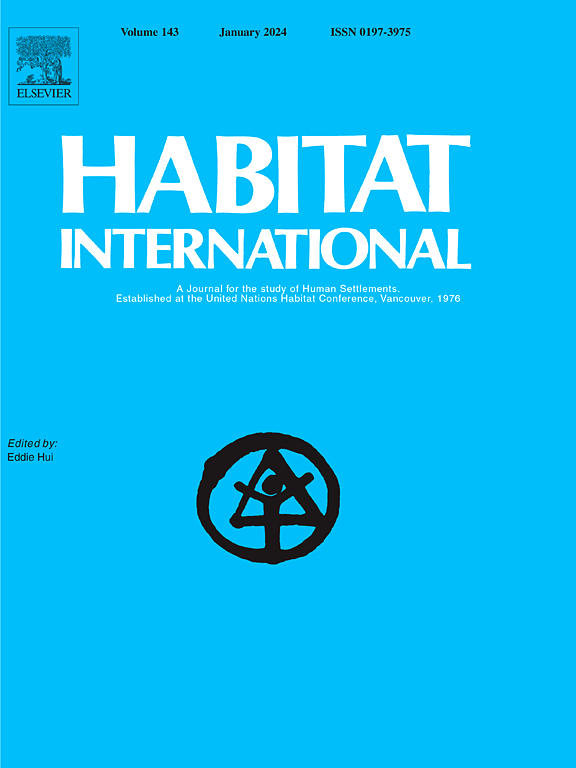Unifying static and dynamic perspectives to assess spatial mismatch in polycentricity: Evidence from Beijing, China
IF 7
1区 经济学
Q1 DEVELOPMENT STUDIES
引用次数: 0
Abstract
Polycentric development is widely recognized as an ideal spatial model for megacities, yet its implementation often falls short in the contexts of rapid expansion and suburbanization. Addressing this discrepancy demands a critical examination of urban form and inter-centre relationships. By leveraging large-scale mobile phone data, this study integrates static density distributions with dynamic mobility patterns to establish a conceptual framework for examining the internal structure and functional interdependencies within both cores and peripheries. We propose a novel methodology that combines spatial autocorrelation and the Leiden algorithm to identify Urban Employment Centres (UECs) across weekdays and weekends. The findings reveal a dual reconfiguration of the urban system: (1) the fragmentation of a historically contiguous core into large, distinct UECs, and (2) the integration of dispersed suburban settlements into small, individual UECs. While rank-size distributions indicate balanced employment and flow densities, network analysis reveals a pronounced capability hierarchy: a minority of UECs control resource agglomeration and diffusion, confining others to peripheral roles. This indicates that the nominal polycentric strategy has not developed as anticipated, but instead perpetuates monocentric path dependence. Moreover, geographical constraints and core-city dominance continue to impede cooperative networks between centres, thereby exacerbating core-periphery disparities in evolving megacities. This study advances a scalable diagnostic framework, enabling consistent assessment of polycentricity across institutional, cultural, and developmental contexts. Its findings provide policymakers with actionable strategies to reconcile polycentric goals with compact development, fostering equitable and sustainable transitions in megacities.
统一静态和动态视角评估多中心空间失配:来自中国北京的证据
多中心发展被广泛认为是超大城市的理想空间模式,但在快速扩张和郊区化的背景下,其实施往往存在不足。解决这一差异需要对城市形态和中心间关系进行批判性检查。通过利用大规模移动电话数据,本研究将静态密度分布与动态移动模式相结合,建立了一个概念框架,用于研究核心和外围的内部结构和功能相互依赖关系。我们提出了一种结合空间自相关和莱顿算法的新方法来识别工作日和周末的城市就业中心(UECs)。研究结果揭示了城市系统的双重重构:(1)历史上连续的核心分裂为大型、独特的城市经济区;(2)分散的郊区聚落整合为小型、独立的城市经济区。虽然职级规模分布表明就业和流动密度平衡,但网络分析揭示了明显的能力层次:少数uec控制资源集聚和扩散,将其他uec限制在外围角色。这表明名义上的多中心战略并没有像预期的那样发展,而是延续了单中心路径依赖。此外,地理限制和核心城市的主导地位继续阻碍中心之间的合作网络,从而加剧了发展中的特大城市的核心与外围差距。本研究提出了一个可扩展的诊断框架,使跨机构、文化和发展背景的多中心性评估保持一致。其研究结果为政策制定者提供了可行的战略,以协调多中心目标与紧凑型发展,促进特大城市的公平和可持续转型。
本文章由计算机程序翻译,如有差异,请以英文原文为准。
求助全文
约1分钟内获得全文
求助全文
来源期刊

Habitat International
Multiple-
CiteScore
10.50
自引率
10.30%
发文量
151
审稿时长
38 days
期刊介绍:
Habitat International is dedicated to the study of urban and rural human settlements: their planning, design, production and management. Its main focus is on urbanisation in its broadest sense in the developing world. However, increasingly the interrelationships and linkages between cities and towns in the developing and developed worlds are becoming apparent and solutions to the problems that result are urgently required. The economic, social, technological and political systems of the world are intertwined and changes in one region almost always affect other regions.
 求助内容:
求助内容: 应助结果提醒方式:
应助结果提醒方式:


